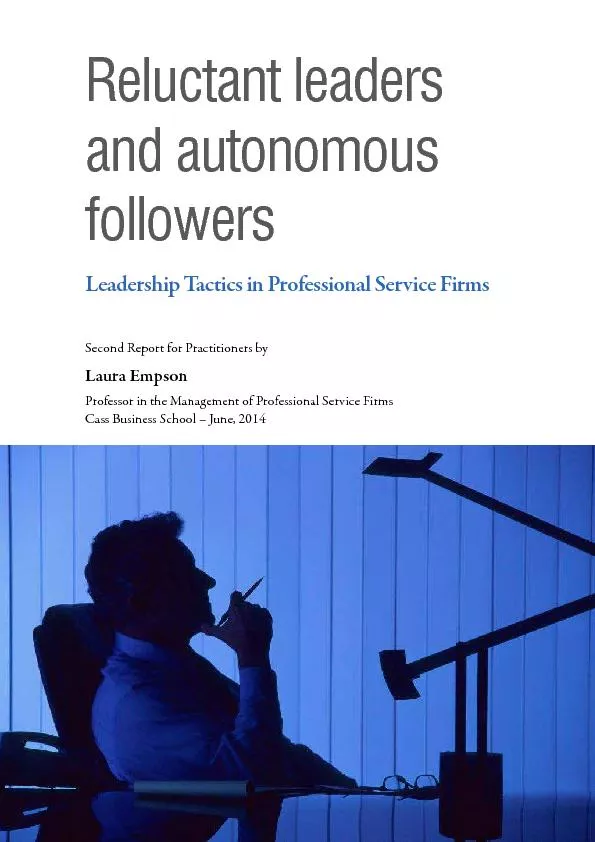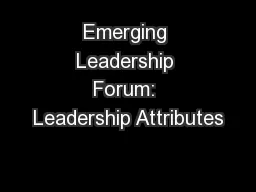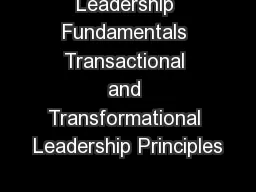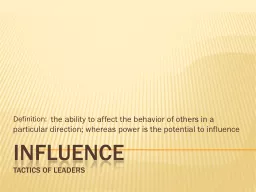PDF-Reluctant leaders and autonomous Leadership Tactics in Professional Se
Author : debby-jeon | Published Date : 2016-07-21
1 3 is report for practitioners presents further analysis from the research study conducted by Professor Laura Empson entitled 145Understanding Leadership Dynamics
Presentation Embed Code
Download Presentation
Download Presentation The PPT/PDF document "Reluctant leaders and autonomous Leaders..." is the property of its rightful owner. Permission is granted to download and print the materials on this website for personal, non-commercial use only, and to display it on your personal computer provided you do not modify the materials and that you retain all copyright notices contained in the materials. By downloading content from our website, you accept the terms of this agreement.
Reluctant leaders and autonomous Leadership Tactics in Professional Se: Transcript
Download Rules Of Document
"Reluctant leaders and autonomous Leadership Tactics in Professional Se"The content belongs to its owner. You may download and print it for personal use, without modification, and keep all copyright notices. By downloading, you agree to these terms.
Related Documents














